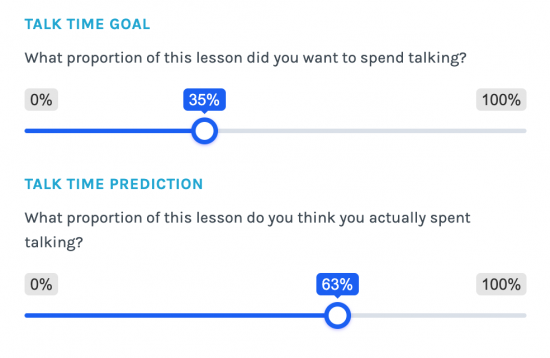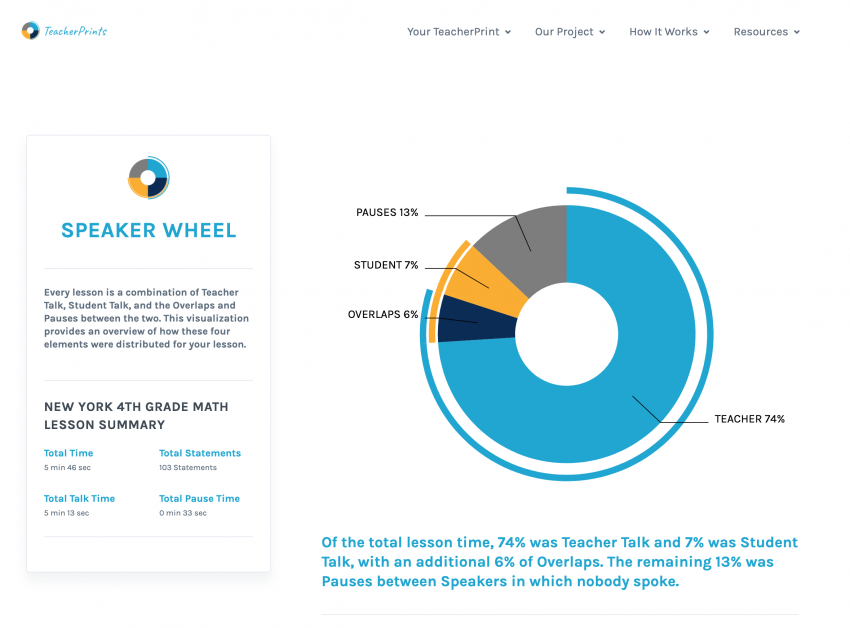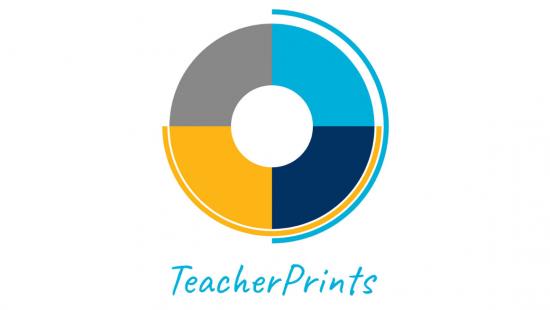What if classroom teachers had access to an inexpensive, simple to use tool that provided them with actionable, real-time feedback on their lesson delivery? TeacherPrints, a project developed in the Master of Information and Data Science (MIDS) Capstone class, does just that, and recently won a $25,000 grant.
TeacherPrints with LearningFlow was selected as a Catalyst Prize winner by the Futures Forum on Learning. TeacherPrints started out as a Summer 2020 capstone project created by Kim Darnell, Anna Jacobson, Lee Moore, and Tim Slade. The MIDS alumni all have instructional backgrounds and a passion for improving evidence-based learning practices. As Slade put it, a cheaper, simpler-to-administer mechanism for providing teachers with actionable feedback on their lesson delivery “could be really powerful.”
The idea is disarmingly simple on the surface: teachers benefit from instructional coaching, but not all teachers have access to it. Instructional coaches observe teachers in action and then offer feedback — it’s a constructive way to affect learning outcomes. In practice, though, it’s expensive to implement and logistically difficult to administer; often the school districts where instructional coaching might be of greatest benefit lack the resources to invest in such hands-on professional development.
This is where the MIDS team envisions TeacherPrints bridging the gap. It works like this: using the smartphone they probably already own, classroom teachers upload an audio file of themselves giving a lesson. The app then analyzes the file using machine learning to isolate four important features of lesson delivery:
- How much of the class involved talking,
- How much the teacher and the students talked, respectively,
- How much the teacher and students talked over each other, and,
- How often the room was quiet.
By measuring the talk time, teachers are able to gauge the lesson’s conversational flow and compare it to what they had in mind when they prepared and delivered their lesson plan. The data from the app helps teachers in adjusting their instructional methods and techniques to better meet their goals for how they intend to engage with students.
The TeacherPrints team stresses that the purpose of the tool is to provide a way for teachers to focus on their own practice. It doesn’t assess the content of the lesson given or determine whether a particular teaching approach is better or worse; rather, it helps teachers evaluate whether they’ve met their own goals, in the context of the educational choices they’ve made and the approach they’re using for any particular lesson. This makes the tool extensible to a wide variety of teaching styles and educational norms, even across different languages. Regardless of any of these factors, the team says, regular use of TeacherPrints allows teachers to document their progress and identify new instructional goals along their personal paths to teaching excellence.
To make TeacherPrints a more powerful tool, the team is interested in moving beyond just talk time to tracking specifically who is talking, what ideas are being shared, and how that content is flowing around the classroom. They’re working with learning scientist Korah Wiley, an alumna of the UC Berkeley Graduate School of Education, on the second half of their project, LearningFlow, which uses natural language processing (NLP) and machine learning to develop learning analytics.
It’s often difficult for teachers facilitating discussion to attend to both who is speaking, what they’re saying, and what ideas have been shared. LearningFlow would assist teachers by allowing them to see through teacher dashboards who spoke, how long they talked, what they said, and if the ideas were taken up, ignored, or improved upon, empowering educators to visualize the flow of ideas more meaningfully, and see what the learning process looks like.
“Given the relationship between discourse dynamics, learning, and power,” Wiley said, “LearningFlow can support teachers and researchers in exploring and redesigning their discussion practices to create more equitable learning experiences.”
The TeacherPrints team sees significant potential for machine learning and NLP in giving teachers new tools to help improve their practice. But they stress that their goal is to add helpful tools to an already extensive toolkit while respecting that these new tools may or may not be useful for every teacher in every classroom.
“There’s a ton of context that goes into teaching,” Slade said. “I’m skeptical that many systems, if any, can effectively capture all of it.” He said the most appropriate and effective tools will be the ones that make it easier for teachers to focus on their own practice (by becoming reflective) or on the students (whether by relieving administrative burdens or more quickly extracting deeper insights from students’ work). TeacherPrints assists with the former, and LearningFlow will assist with the latter.
“If machine learning and NLP can be harnessed to provide meaningful feedback to teachers who otherwise might not get any feedback at all,” Anna Jacobson said, “that’s a win for everyone.”
















